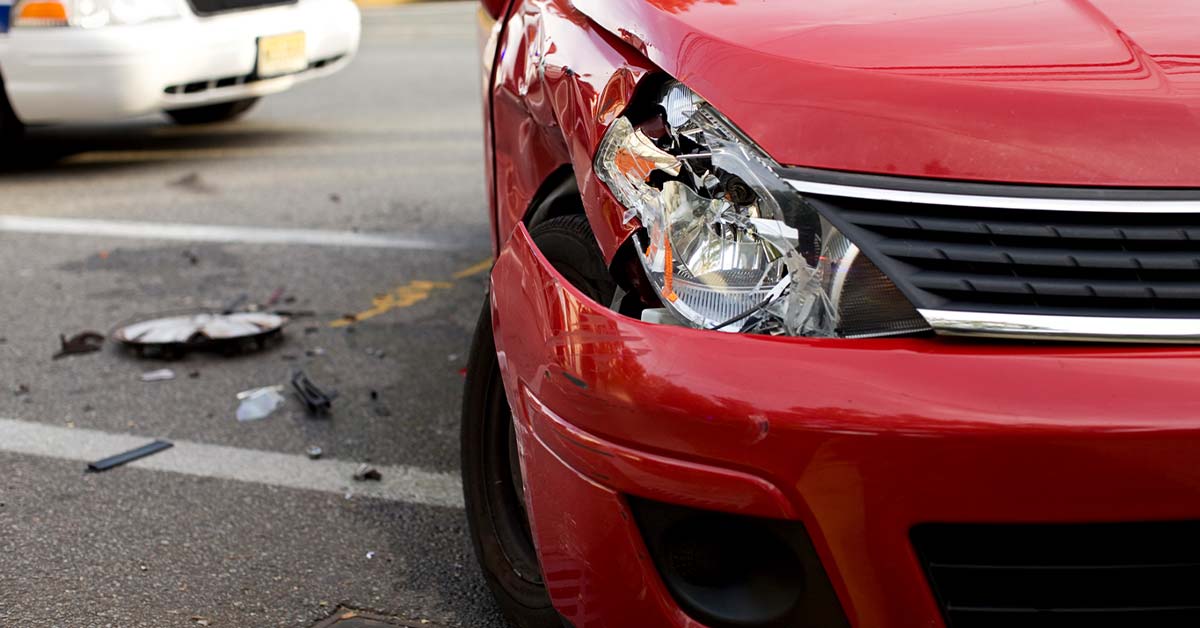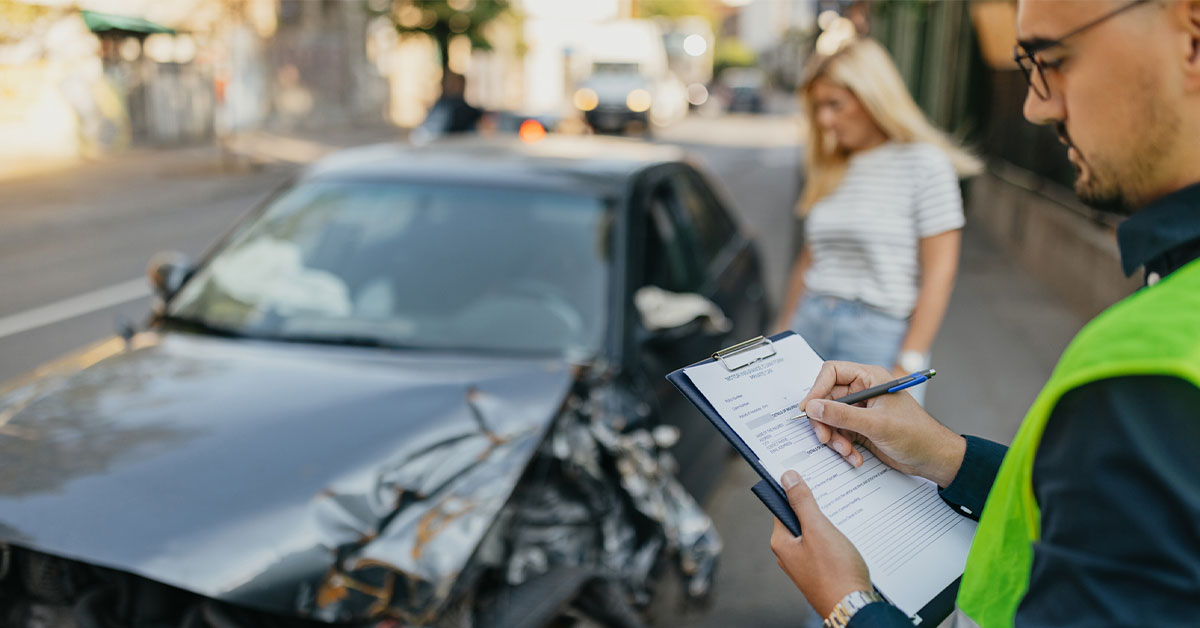According to a 2021 study by the Insurance Research Council (IRC), about one in eight drivers on the road did not have car insurance in 2019. Since state-required liability insurance doesn’t cover your own vehicle or injuries, how do you cover medical or repair bills after an accident with an uninsured driver? In these scenarios, uninsured/underinsured motorist coverage will protect you if you’re hit by someone without adequate insurance to cover the damages they caused.
How Does Uninsured Motorist Coverage Work?
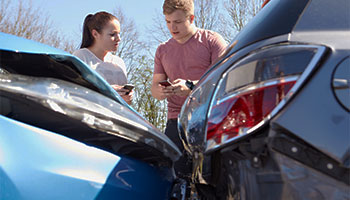
Uninsured motorist (UM) coverage provides financial protection for repair or medical bills if you get into an accident with an uninsured driver. An uninsured driver is a person who operates a vehicle without carrying their state’s required liability insurance.
A driver’s liability insurance normally covers property damage and injuries they cause after an accident. However, if the at-fault driver does not carry insurance, you could be left to cover the bill yourself out-of-pocket. With uninsured motorist coverage, you close the gap between your own costs and the uninsured driver’s ability to pay for damages.
What About Underinsured Motorist Coverage?
When researching uninsured motorist coverage, you may have also encountered underinsured motorist insurance (UIM). When offered, these coverages are typically sold alongside one another as the coverages work in similar ways. The difference, however, is that underinsured motorist coverage is reserved for accidents with at-fault drivers with some insurance, but not enough to cover all associated costs. In these scenarios, the underinsured at-fault driver’s insurance will cover damages up to their policy limits, and your underinsured motorist coverage will cover the rest, up to your policy limits.
What Does Uninsured/Underinsured Motorist Coverage Pay For?
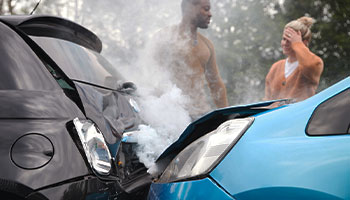
So, what exactly does uninsured/underinsured motorist coverage pay for? Depending on your state, uninsured/underinsured motorist insurance can be split up into the following coverages:
Accidents with uninsured motorists:
- Uninsured motorist bodily injury (UMBI) – pays for medical bills, lost wages, and funeral expenses for you and your passengers that result from the accident.
- Uninsured motorist property damage (UMPD) – if offered in your state, this coverage pays for damage to your car following an accident with an uninsured driver.
Accidents with underinsured motorists:
- Underinsured motorist bodily injury (UIMBI) – provides coverage when a driver causes a car accident but does not carry enough insurance to cover your medical bills, lost wages, or funeral expenses for you and your passengers.
- Underinsured motorist property damage (UIMPD) – provides coverage when a driver causes an accident but does not have enough coverage to cover your vehicle’s repair cost.
In most cases, uninsured motorist coverage limits will mirror liability coverage limits. For example, if you have liability bodily injury limits of $50,000 per person and $100,000 per accident (50/100), you would buy 50/100 in UMBI coverage. Additionally, some states may require a deductible for UMPD and UIMPD claims. However, UMBI and UIMBI do not typically require a deductible.
Does Uninsured Motorist Property Damage Cover Hit-and-Run Accidents?
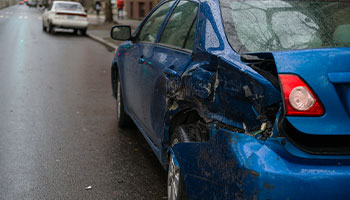
Some states may allow UMPD to cover vehicle damage from hit-and-run accidents, but not all.
California, for example, only allows UMPD to cover hit-and-run accidents if the fleeing driver is identified. On the other hand, some carriers may not even offer UMPD in your state.
Without UMPD, you will need collision coverage to repair your car following a hit-and-run, which typically involves a deductible.
Should I Purchase Uninsured Motorist Coverage If I Have Health Insurance?
You may wonder why you need UMBI coverage if you have health insurance. Although health insurance may cover your medical costs while in treatment, it may not cover any passengers in the car with you. Additionally, your health insurance may have a high deductible, whereas UMBI and UIMBI typically do not. UMBI/UIMBI may also cover lost wages if you cannot work following an accident.
Which States Require Uninsured Motorist Coverage?
Uninsured motorist coverage isn’t required in every state. Most states may offer the coverage but will allow you to reject it in writing. You are required to purchase some form of uninsured/underinsured motorist coverage in the following states:
| State | Uninsured Motorist BI | Underinsured Motorist BI | Uninsured/Underinsured PD |
| Connecticut | $25,000 per person and $50,000 per accident | $25,000 per person and $50,000 per accident | – |
| District of Columbia | $25,000 per person and $50,000 per accident | – | $5,000 subject to a $200 deductible |
| Illinois | $25,000 per person and $50,000 per accident | Required if you purchase higher limits of UMBI. | – |
| Kansas | $25,000 per person and $50,000 per accident | $25,000 per person and $50,000 per accident | – |
| Maine | $50,000 per person and $100,000 per accident | $50,000 per person and $100,000 per accident | – |
| Maryland | $30,000 per person and $60,000 per accident | $30,000 per person and $60,000 per accident | $15,000 per accident |
| Massachusetts | $20,000 per person and $40,000 per accident | – | – |
| Minnesota | $25,000 per person and $50,000 per accident | $25,000 per person and $50,000 per accident | – |
| Missouri | $25,000 per person and $50,000 per accident | – | – |
| Nebraska | $25,000 per person and $50,000 per accident | $25,000 per person and $50,000 per accident | – |
| New Hampshire | $25,000 per person and $50,000 per accident | – | – |
| New Jersey | $25,000 per person and $50,000 per accident | – | – |
| New York | $25,000 per person and $50,000 per accident | – | – |
| North Carolina | $30,000 per person and $60,000 per accident | Required if your purchased UM coverage exceeds the minimum | $25,000 per accident |
| North Dakota | $25,000 per person and $50,000 per accident | $25,000 per person and $50,000 per accident | – |
| Oregon | $25,000 per person and $50,000 per accident | – | – |
| South Carolina | $25,000 per person and $50,000 per accident | – | $25,000 per accident with a $200 deductible |
| South Dakota | $25,000 per person and $50,000 per accident | $25,000 per person and $50,000 per accident | – |
| Vermont | $50,000 per person and $100,000 per accident | $50,000 per person and $100,000 per accident | $10,000 per accident with a $150 deductible |
| Virginia* | $30,000 per person and $60,000 per accident | $30,000 per person and $60,000 per accident | $20,000 per accident |
| West Virginia | $25,000 per person and $50,000 per accident | – | $25,000 per accident |
| Wisconsin | $25,000 per person and $50,000 per accident | – | – |
*Motorists in Virginia can pay an uninsured motor vehicle fee and are not required to purchase auto insurance. However, they will still be liable for damages if they cause an accident.
Purchasing Uninsured Motorist Coverage Will Keep You Protected
Even if uninsured motorist coverage isn’t required in your state, this affordable coverage may be well worth it to keep yourself fully protected. For example, according to the Insurance Research Council, approximately 12% of all drivers nationwide were uninsured in 2019 (the latest data available). However, the numbers vary significantly by state. For example, in the same study, 29.4% of drivers in Mississippi were estimated not to have insurance. Additionally, at least 20% of Michigan, Tennessee, New Mexico, Washington, and Florida drivers weren’t insured, either.
If you’d like to learn more about uninsured motorist insurance and how to find coverage, AIS can help. With over 55 years of experience in the insurance marketplace, AIS is dedicated to helping drivers find and compare auto insurance quotes from our network of trusted insurance partners. So if you’re ready, call us at (888) 772-4247 to speak with an insurance specialist or start a quote online.
The information in this article is obtained from various sources and offered for educational purposes only. Furthermore, it should not replace the advice of a qualified professional. The definitions, terms, and coverage in a given policy may be different than those suggested here. No warranty or appropriateness for a specific purpose is expressed or implied.
